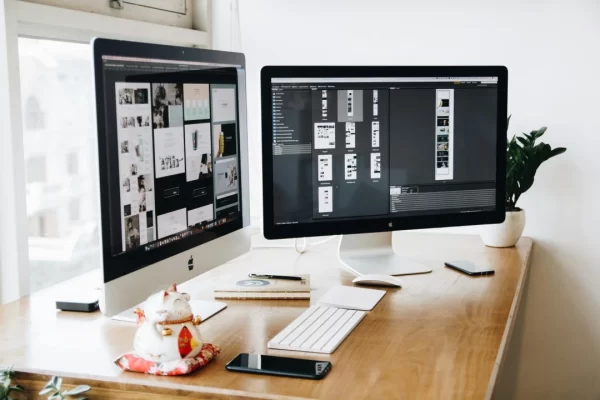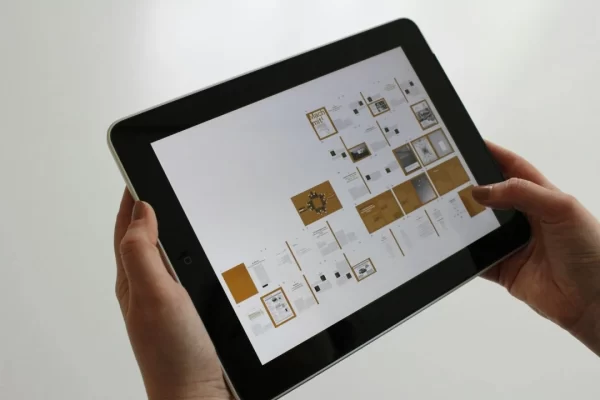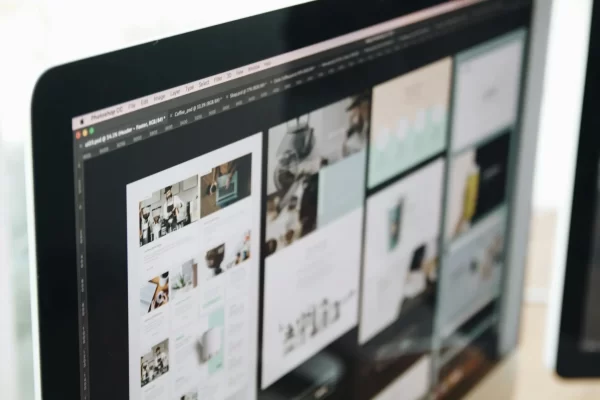In today’s fast-paced world, people are always looking for quick and easy ways to access information. As such, user experience (UX) has become a crucial element of web design. It’s no longer enough to have a visually appealing website; it must also be easy to navigate, intuitive to use, and provide a seamless user experience. Animation in web design is one element that can help you achieve these goals.
In this article, we’ll explore how to use animation in web design to help enhance user experience.
Understanding Animation in Web Design
Animation in web design is more than just a visual enhancement—it plays a crucial role in user experience (UX). By incorporating motion graphics, CSS animations, and interactive elements, websites can become more engaging and intuitive. Whether it’s subtle micro-interactions or dynamic transitions, animation can guide users, provide feedback, and make navigation seamless.
The Role of Animation in Web Design
Using animation in web design can transform a static website into a more immersive experience. Below are some key roles animation plays in web design:
1. Enhancing User Interaction
Animations provide visual cues that help users understand how to interact with a website. For example, hover effects on buttons indicate they are clickable, while smooth transitions make navigating between pages more natural.
2. Improving User Engagement
Engaging animations capture attention and encourage users to stay on a website longer. Motion elements can highlight key content, making it easier for users to focus on essential information.
3. Providing Feedback
Interactive animations reassure users that their actions are being registered. For example, a button changing color upon clicking or a loading spinner appearing while a page loads helps manage user expectations.
4. Guiding User Navigation
Animations can subtly direct users toward calls to action, such as highlighting a sign-up form or directing attention to an important announcement.
Types of Animation in Web Design
1. Micro-Animations
Micro-animations are subtle movements triggered by user actions, such as clicking a button or hovering over an element. They add personality to a website while improving usability.
Examples:
- A button changing color when clicked.
- Navigation menus expanding upon hovering.
- A form submit button animating when pressed.
2. Loading Animations
Loading animations keep users engaged while content loads, reducing frustration and bounce rates.
Examples:
- Spinning icons while waiting for a page to load.
- Progress bars indicating file uploads.
- Confirmation animations after submitting a form.
3. Hover Animations
Hover animations create interactive elements that respond when a user hovers over them. They enhance user engagement and improve navigation.
Examples:
- Product images zooming in when hovered over.
- Buttons changing color to indicate interactivity.
- Tooltip pop-ups providing additional information.
Best Practices for Using Animation in Web Design
1. Maintain Consistency
Consistent animations create a smooth and cohesive experience. Keep animation styles uniform across your website to avoid confusion.
Tips:
- Use similar animations for buttons, menus, and forms.
- Keep animation speeds uniform for a polished look.
- Apply the same easing function to all transitions.
2. Use Animation Purposefully
Every animation should serve a clear function. Avoid excessive motion that may distract users rather than enhance their experience.
Effective uses:
- Highlighting calls to action.
- Providing feedback on user actions.
- Making navigation seamless with smooth page transitions.
3. Optimize for Performance
Animations should enhance UX without slowing down the website. Heavy animations can impact loading times and frustrate users.
Optimization tips:
- Use CSS animations instead of JavaScript for smoother performance.
- Minimize excessive animations to maintain fast page speeds.
- Optimize file sizes of animated elements.
Benefits of Animation in Web Design for User Engagement
1. Capturing Attention
Animations naturally draw the eye, making them effective for highlighting important content and features.
2. Enhancing User Understanding
Animations visually demonstrate how to interact with the website, reducing confusion and improving usability.
3. Making Websites More Interactive
Interactive elements create a dynamic experience, encouraging users to engage with content and explore different features.
4. Conveying Emotions and Brand Identity
Animations can evoke emotions and establish brand personality. Playful movements may reflect a fun, creative brand, while smooth, elegant animations can create a sense of professionalism.
FAQs About Animation in Web Design
1. How does animation improve user experience?
Animation improves UX by making interactions more intuitive, providing feedback, and enhancing engagement. Well-placed animations guide users through the website and create a seamless browsing experience.
2. What are the best types of animation for web design?
The best types of animation include micro-animations, hover effects, loading animations, and transition animations. Each serves a specific purpose, such as improving navigation, engagement, and visual appeal.
3. Can animations slow down a website?
Yes, excessive or unoptimized animations can slow down a website. To maintain fast load speeds, use CSS animations, limit the number of animations, and optimize animated elements.
4. Should animations be used on mobile websites?
Yes, but they should be lightweight and optimized for touch interactions. Avoid excessive motion that could affect loading times or usability on smaller screens.
5. How do I choose the right animations for my website?
Select animations that align with your brand identity and enhance UX. Focus on subtle, functional animations that provide visual feedback and improve navigation.
Enhance Your User Experience with Digital Rescue Today!
An animation is a powerful tool that can enhance the user experience on your website. By using micro-animations, loading animations, and hover animations, you can provide visual feedback to users, manage user expectations, and make your website more interactive.
When using animation in web design, it’s important to maintain consistency, use animation with purpose, and optimise for performance. By following these best practices and studying examples of websites that use animation effectively, you can create a website that looks great and provides a seamless user experience.
If you want to enhance your website’s user experience with animation but need some help, our professional web designers at Digital Rescue are ready to assist you. We can help you create stunning animations that add value to the user experience while optimising performance.
Contact us today to learn more about our web design services and how we can help take your website to the next level.



